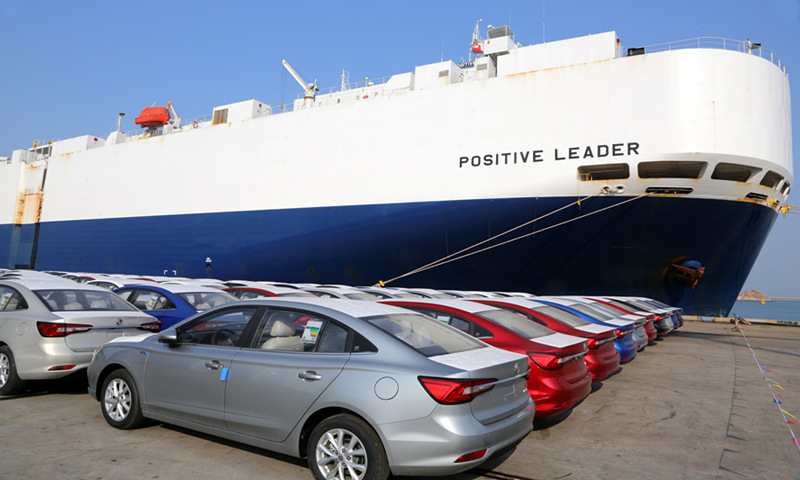China's GDP projected to grow 7.9% in 2021, as recovery accelerates: World Bank
Source: Global Times Published: 2020/12/23 14:43:40

A ship berths at the Lianyungang Port in East China's Jiangsu Province, waiting to load 1,300 cars for export. This year, the port has added sea routes to Southeast Asia and South Korea, and rail and water links to domestic ports. From January to November, Lianyungang port handled a record 568,900 TEUs, up 62.8 percent year-on-year, and it is expected to handle over 600,000 TEUs this year. Photo: VCG
Economic growth in China is expected to slow to 2 percent this year, before rebounding to 7.9 percent growth in 2021, as private investment and consumption heats up next year, a World Bank report released on Wednesday projected.
Following a sharp decline in the first quarter of 2020, economic activity in China has normalized faster than expected, aided by an effective pandemic-control strategy, strong policy stimulus and buoyant exports, said the report, titled as From Recovery to Rebalancing, the December 2020 edition of the World Bank's China Economic Update.
Customs data has showed that China's exports continued on an upward trend hitting record levels in November, offering fresh evidence of the world's second-largest economy's solid recovery from COVID-19 pandemic that continues to ravage the world.
In November, exports jumped 21.1 percent year-on-year, stronger than October's growth rate of 11.4 percent and beating market expectations of 12-percent growth. That brings November's exports to a record high of $268 billion.
The improving data from all sectors shows China's economic recovery is accelerating, Dong Dengxin, director of the Finance and Securities Institute at the Wuhan University of Science and Technology, told the Global Times, while noting that uncertainties remain due to the coronavirus.
The last months of the year are "quite important," Dong said, adding that that whether China can make a 3 percent GDP growth for 2020 depends on whether domestic consumption can withstand headwinds of sporadic COVID-19 outbreaks in the country.
The World Bank report also stated that China's swift recovery had been uneven, with domestic demand recovering more slowly than production, and consumption more slowly than capital investment.
The report said risks to China's economic recovery are high but broadly balanced. On the downside, it listed recurrent COVID-19 flareups, a challenging and highly uncertain global environment, and persistent bilateral tensions with major trading partners.
On the upside, a swift and widespread rollout of an effective vaccine would boost consumer and business confidence and support stronger growth, said the report.
"The global environment remains highly uncertain and this calls for an adaptive policy framework. A premature policy exit and excessive tightening could derail the recovery," said Martin Raiser, World Bank Country Director for China. "The withdrawal of fiscal support should proceed gradually, but the focus should shift from traditional infrastructure to more social spending and green investment."
China's top policymakers have vowed on several occasions to maintain continuity in macroeconomic policies next year and not making any "sudden turns" of policies.
During a tone-setting meeting for economic work for the coming year held in Beijing last week, China's top policymakers have commended historic achievements in the battle against the COVID-19 pandemic, and set tackling its lingering risks as a top priority for 2021, and also outlined policy priorities in eight specific economic areas.
Among the areas of top priority are efforts to bolster the country's strategic technology capability, to help address major challenges that may hamstring the country's development and security.
Global Times
Posted in: ECONOMY